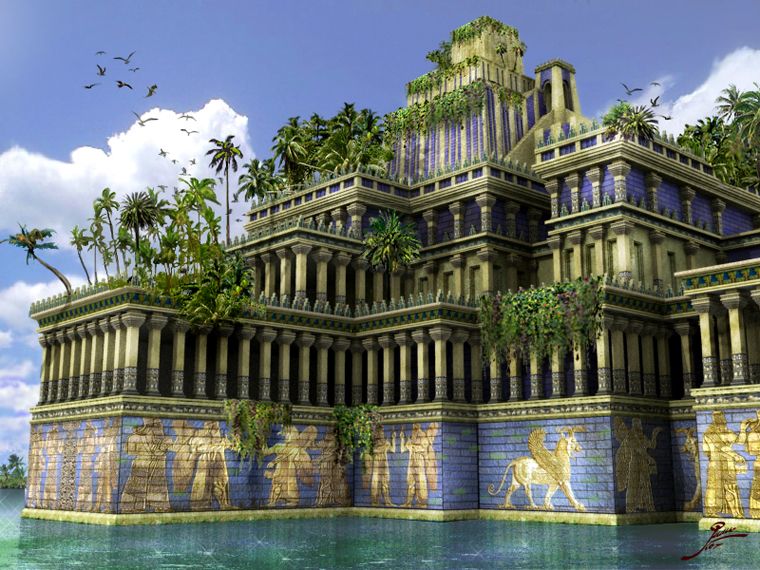Mesopotamian Civilization

Contents
- Introduction
- Powerful Empires of Mesopotamia
- Gilgamesh
- Sargon of Akkad
- The Gutians
- The Babylonians
- The Hittites
- The Assyrian Empire
- Source

Introduction
Mesopotamia is an ancient civilization located in the Fertile Crescent of Western Asia. This area is known for its rich history, as it was once home to a number of great civilizations. Mesopotamian civilization is considered one of the most important cultures of the ancient world, spanning from 3500 BC to 600 AD. Its influence can still be seen today in many aspects including language, architecture and literature.
The Mesopotamians left behind a treasure trove of artefacts that give us insight into their culture and beliefs. These include clay tablets containing inscriptions on a cuneiform script, stone sculptures and exquisite jewellery made from precious metals such as gold and silver. They also developed advanced irrigation systems in order to increase agricultural productivity by controlling the flow of water from rivers and streams, which allowed them to build large cities like Babylon and Nineveh.
Mesopotamia, also known as the ‘land between two rivers’, is an important place in ancient history. Located in the Middle East and spanning from modern-day Iraq to parts of Syria, Turkey, and Iran, Mesopotamia was home to one of the earliest civilizations in human history. It is believed that this advanced civilization flourished around 3000 BCE and played a key role in ushering in the Iron Age.
This ancient civilization was responsible for many inventions such as cuneiform writing systems, urban planning, irrigation systems for farming, and complex religious beliefs. Mesopotamian culture had a profound influence on other societies throughout the region including those of Egypt and Persia. This period of time saw many advances in mathematics, astronomy, literature and art which have been studied by scholars ever since its decline around 500 BCE.
Powerful Empires of Mesopotamia
The ancient Mesopotamian region is renowned for its numerous empires and civilizations. Spanning from the beginning of recorded history, the area has seen the rise and fall of some of the most powerful empires in human history. The first such state to emerge in this region was Sumer, which was a complex society that ruled over multiple city-states around 4500 BC.
This culture eventually gave way to other powerful states, such as Akkad, Assyria, Babylonia and Persia. These different empires held sway over Mesopotamia for centuries and exerted great influence on the development of human civilization. They traded with distant lands, maintained advanced irrigation systems and developed sophisticated legal codes that would later form part of many modern legal systems.
Gilgamesh
The Epic of Gilgamesh is one of the oldest known works of literature. Written in cuneiform on clay tablets by the ancient Sumerians, it is believed to date back to approximately 2100 B.C.E and recounts the story of a legendary king, Gilgamesh, and his quest for immortality. The epic is divided into twelve sections, each containing stories that explore themes such as mortality, friendship and loss.
The central figure in the story is Gilgamesh himself – a powerful ruler who sets out to prove his strength through physical feats and intellectual pursuits. He becomes increasingly aware of his own mortality when he meets Utnapishtim, an old man with a secret from which he hopes to gain eternal life.
Sargon of Akkad
Sargon of Akkad (also known as Sargon the Great, Sharru-kin, or simply Sargon) was one of the most powerful and influential rulers in world history. He reigned over an empire that stretched across much of Mesopotamia and parts of Persia, Anatolia and Syria. His reign marks a pivotal moment in ancient Near Eastern history as it marks the beginning of the development of large-scale empires in this region.
Sargon is believed to have lived around 2300 BCE during what scholars refer to as the Early Dynastic Period. This was a period characterized by large-scale migrations from various regions into Mesopotamia leading to cultural amalgamation. During his reign, Sargon expanded his kingdom through military conquests and diplomatic treaties with other kings and city-states.
The Gutians
Gutians were an ancient Mesopotamian people, who settled in the area of Sumer during the reign of Utu-Hegal (Uruk III). They are believed to have been a nomadic people, and first appear in written history during the brief period of Sumerian rule known as “Gutium”. The Gutians were then overthrown by Utu-Hegal’s successor, Sargon of Akkad.
Little is known about these mysterious people; however, some evidence suggests that they spoke a language closely related to Hurrian. This has led scholars to suggest that they may have originated from the Caucasus region or perhaps somewhere in Central Asia. The Gutians are also thought to have had their own deities and religious practices; for example, Inanna was worshipped as their chief goddess.
The Babylonians
Babylonians were an influential Mesopotamian civilization, flourishing from the 18th to the 6th centuries BCE. Located within present-day Iraq, their religious, cultural and political influence was immense, with their literature and inventions influencing later civilizations.
Their most well-known ruler was probably King Hammurabi (1792-1750 BCE), responsible for creating one of the earliest law codes in existence. As well as codifying laws and ensuring justice through them, he also established taxation systems that enabled a stable economy, which is still emulated today in many countries around the world. The knowledge of astronomy developed by the Babylonians was crucial to navigation at that time and they developed mathematical techniques such as multiplication tables which are still used today. In 1750 B.C., the city of Ur was conquered by Elamites, this conquest initiated the end of Sumerian culture.
The Hittites
The Hittites were an ancient civilization that rose to prominence in Anatolia and northern Mesopotamia around 1750 BC. As one of the most powerful empires in the region during this period, they developed a sophisticated culture with extensive trade networks and political alliances throughout the Middle East. This civilization is now remembered as one of the most influential cultures in that region’s history, influencing a number of later civilizations such as Egypt and Assyria.
The Hittites had a distinct religious tradition which blended aspects of earlier Mesopotamian civilizations as well as their own unique beliefs. They believed in multiple gods, many of whom had human traits, but their pantheon was led by their chief deity, Teshub. Additionally, they are credited with developing several important technologies including iron smelting techniques which allowed them to create high-quality weapons for warfare.
The Assyrian Empire
The Assyrian Empire was an ancient Mesopotamian civilization that dates back to the 25th century BC. Noted for its immense size and power, the Assyrian Empire was one of the first great empires in world history, extending from modern-day Iraq to Egypt in the west and parts of Iran in the east. The Assyrians developed a sophisticated system of government that helped them maintain control over their vast empire and create a powerful army capable of conquering other lands.
The Assyrians were known for their mastery of military strategy, which enabled them to easily conquer neighbouring lands such as Babylonia, Canaan, Syria, Media and Persia. They also employed highly advanced siege warfare techniques involving battering rams and complex mazes known as “tortoises” to penetrate fortified cities.
Source
Ancient Civilizations, by Dr Brian Fagan and Chris Scarre, 2015.


